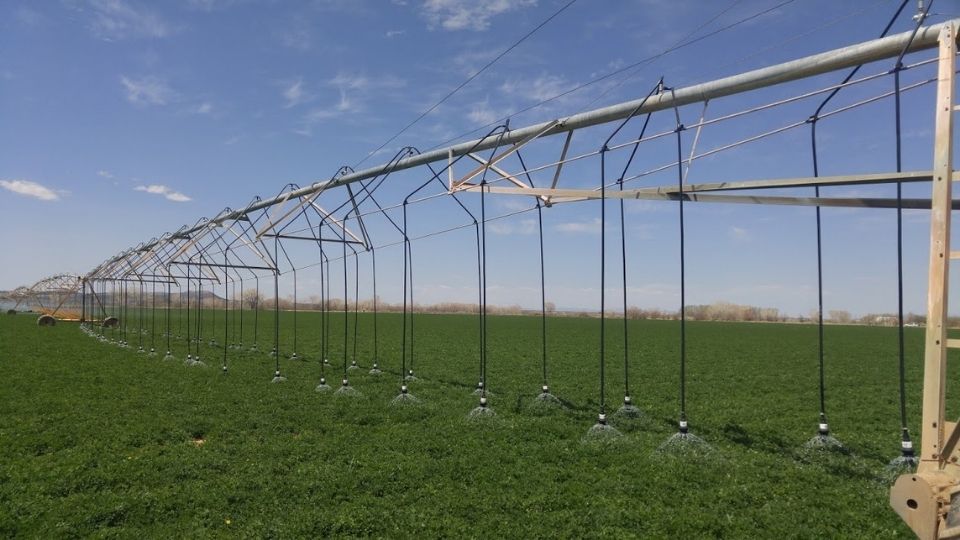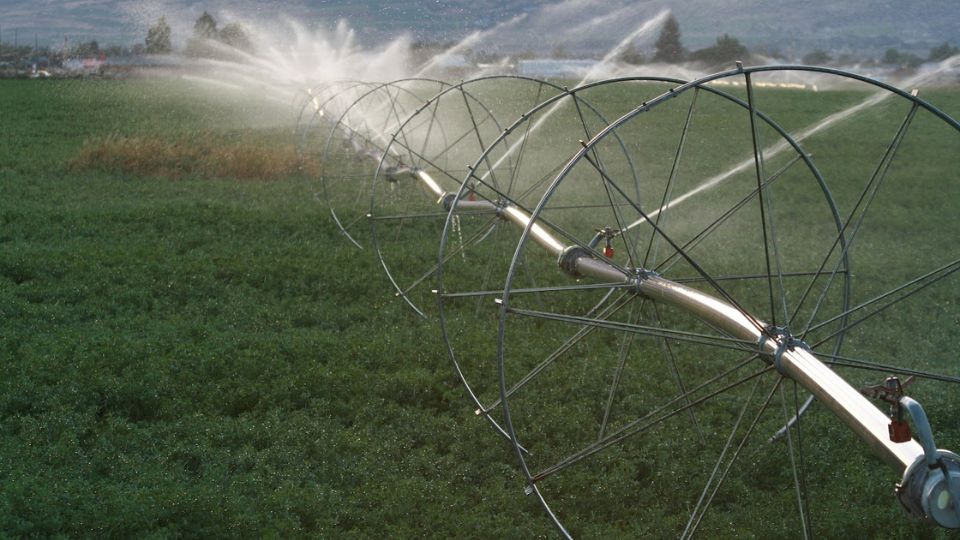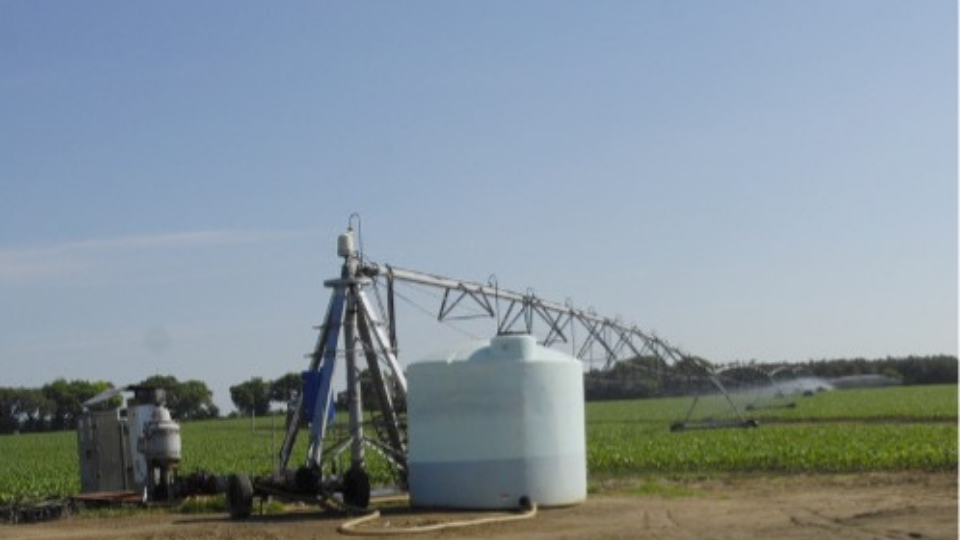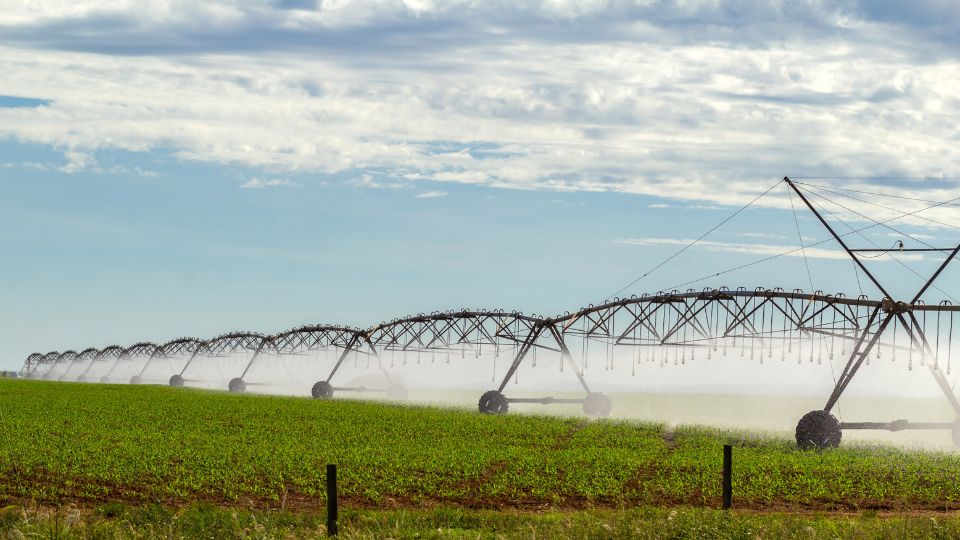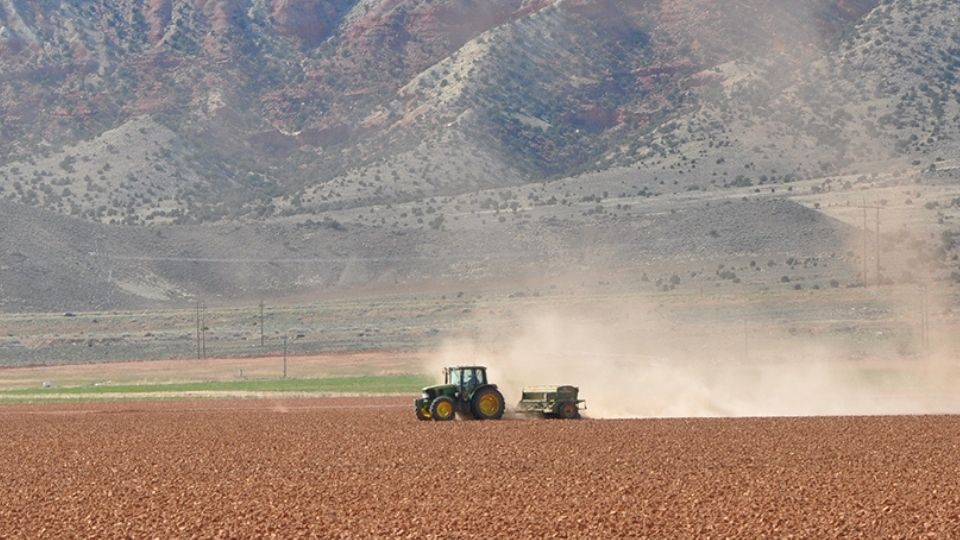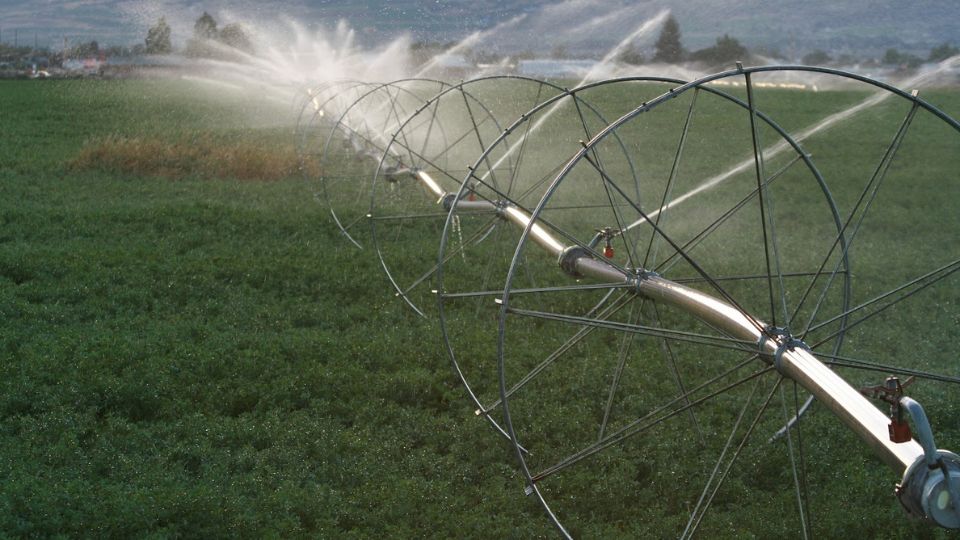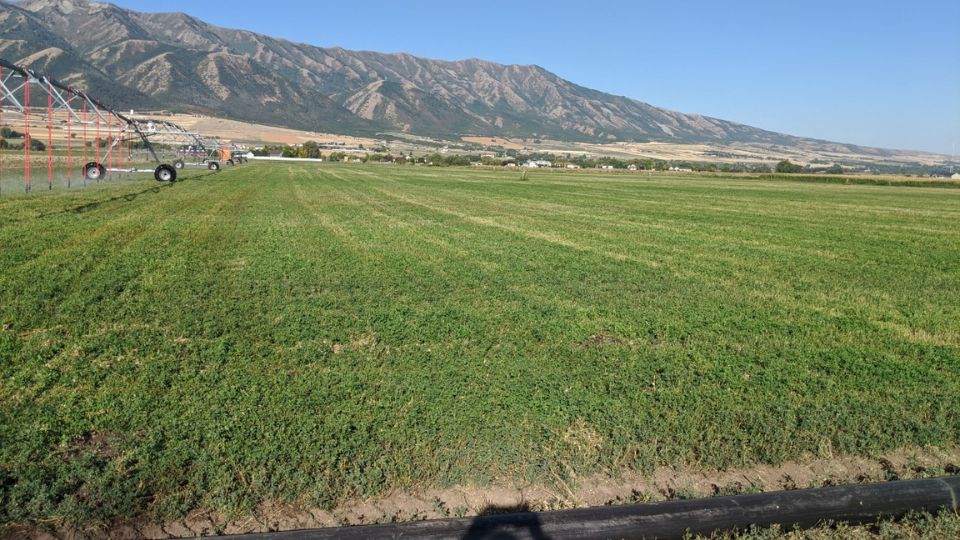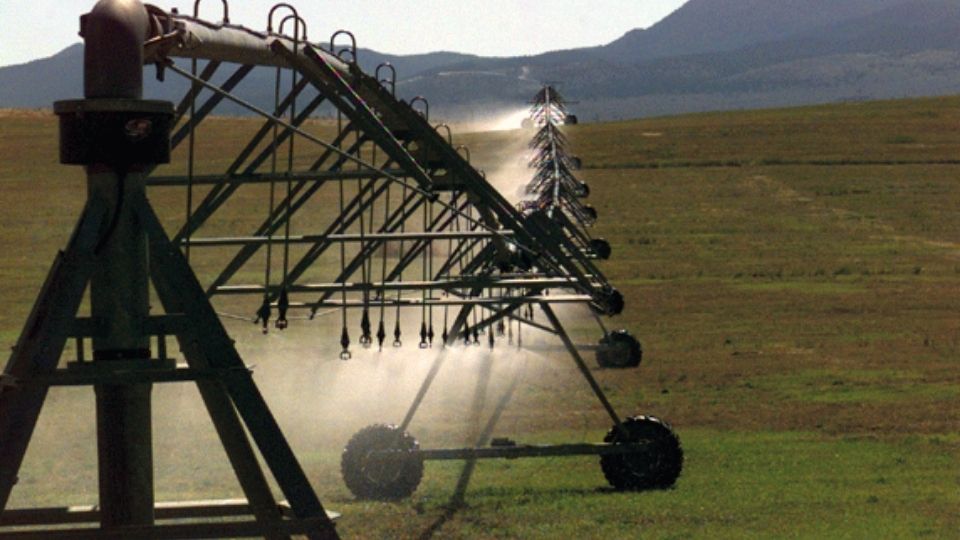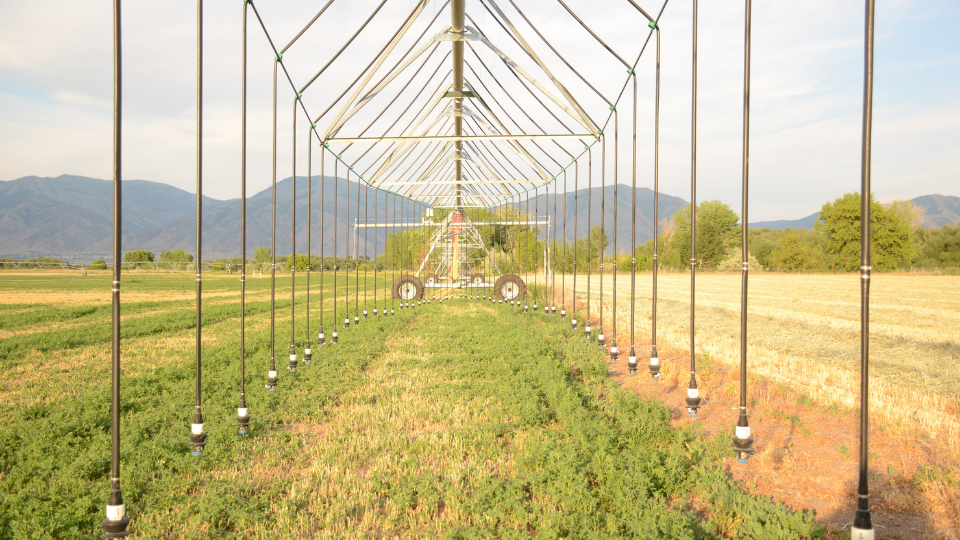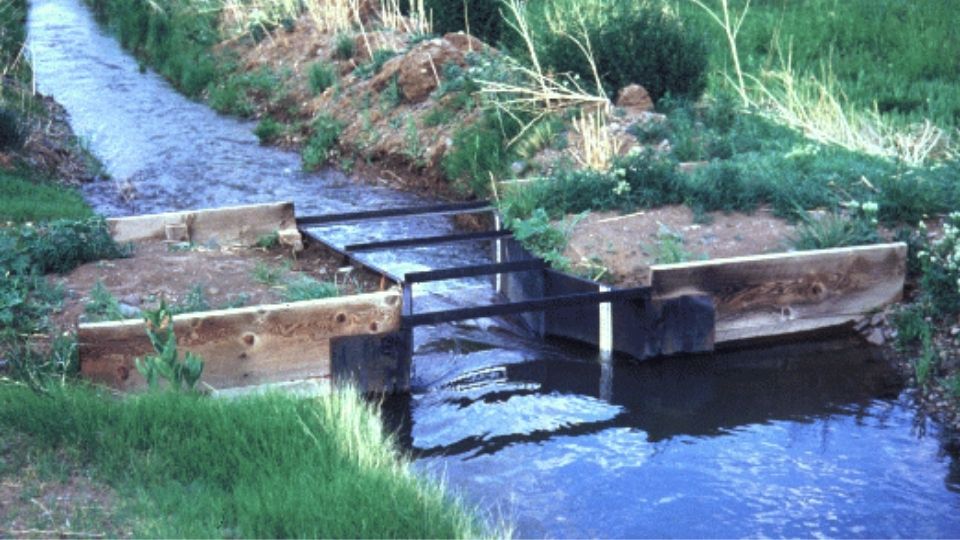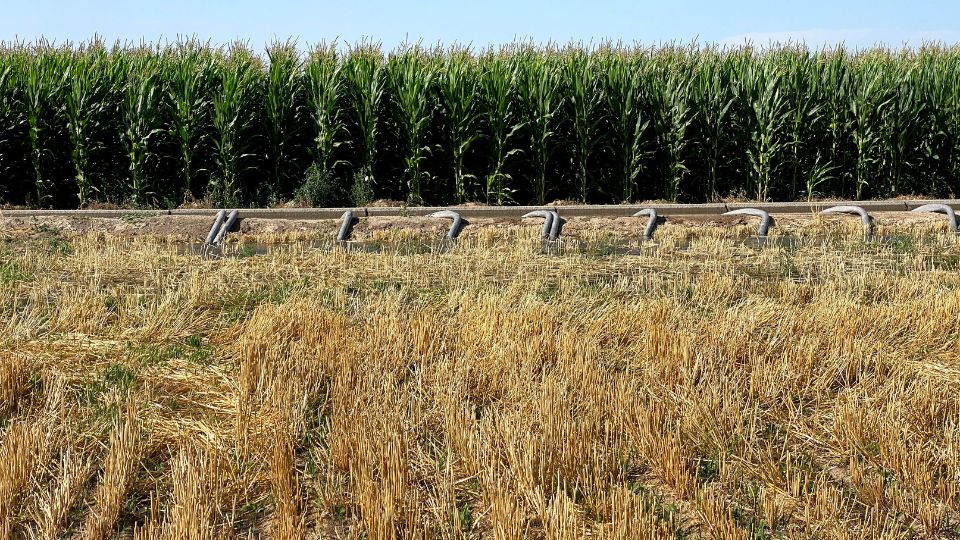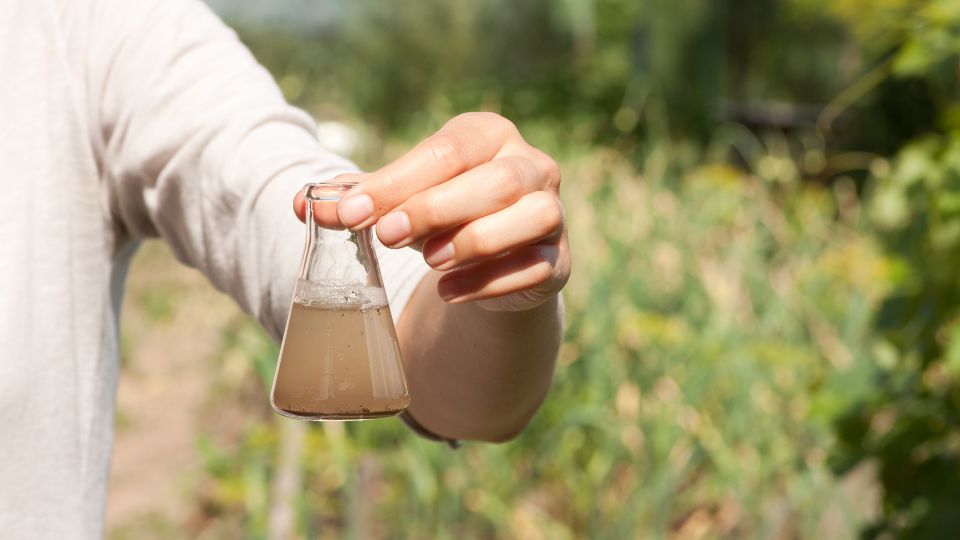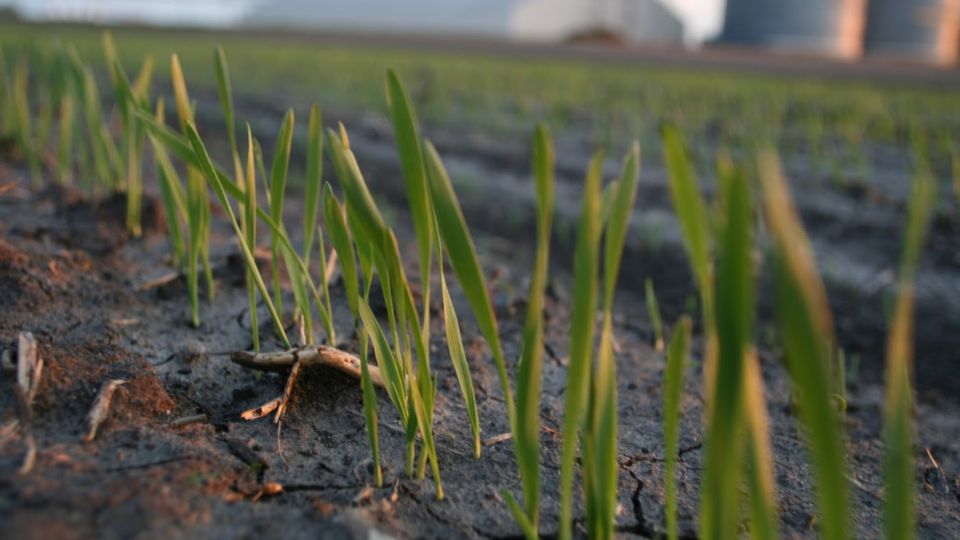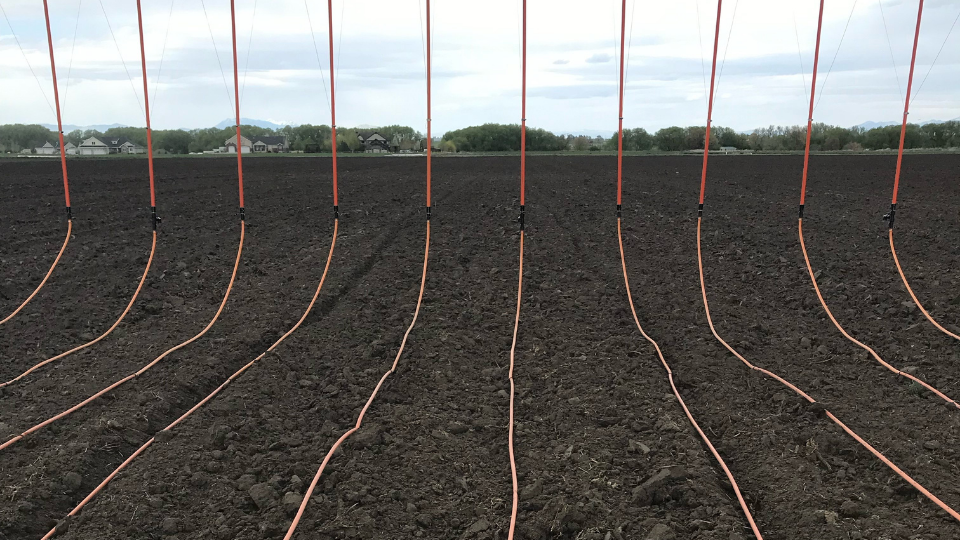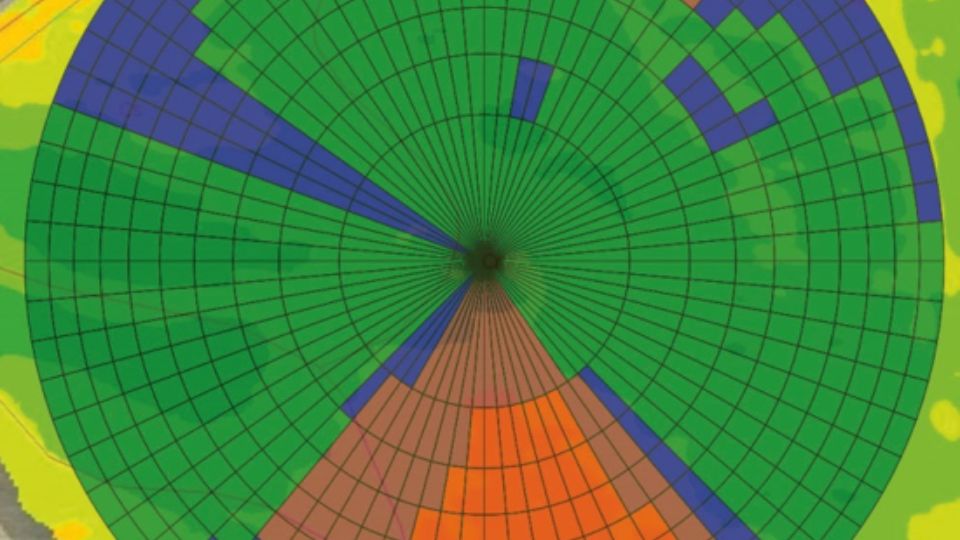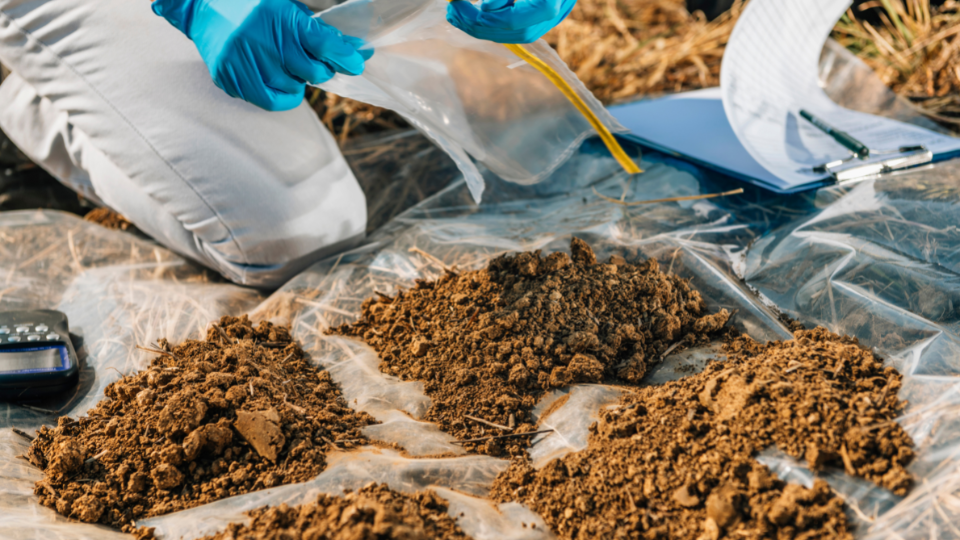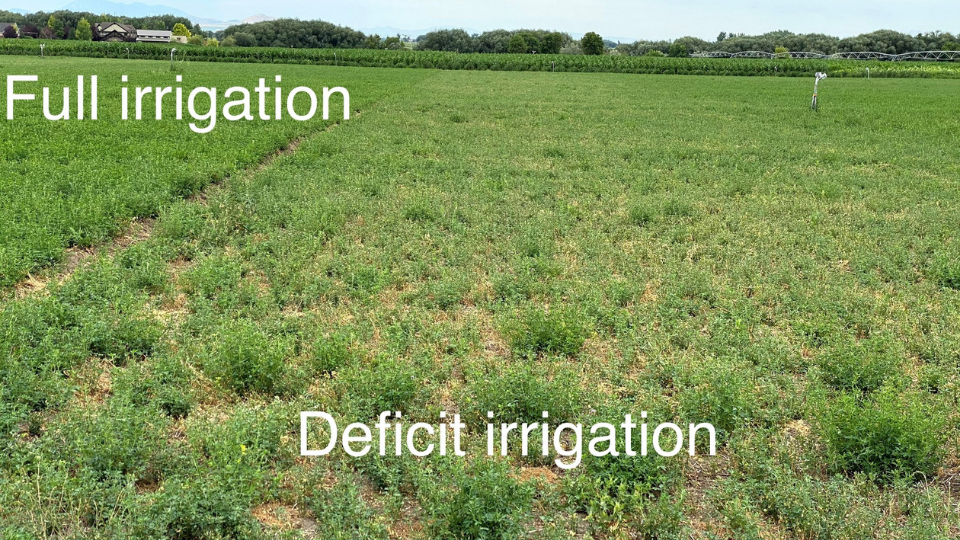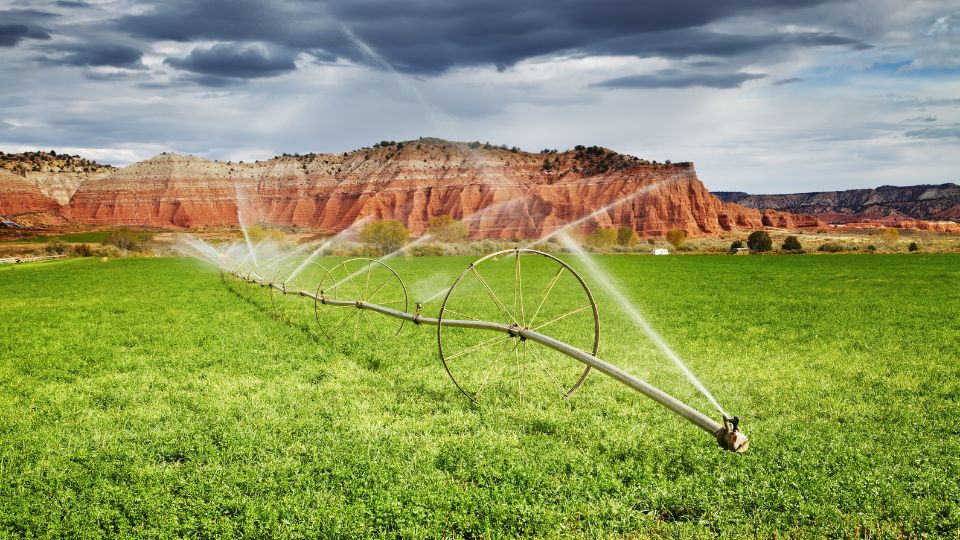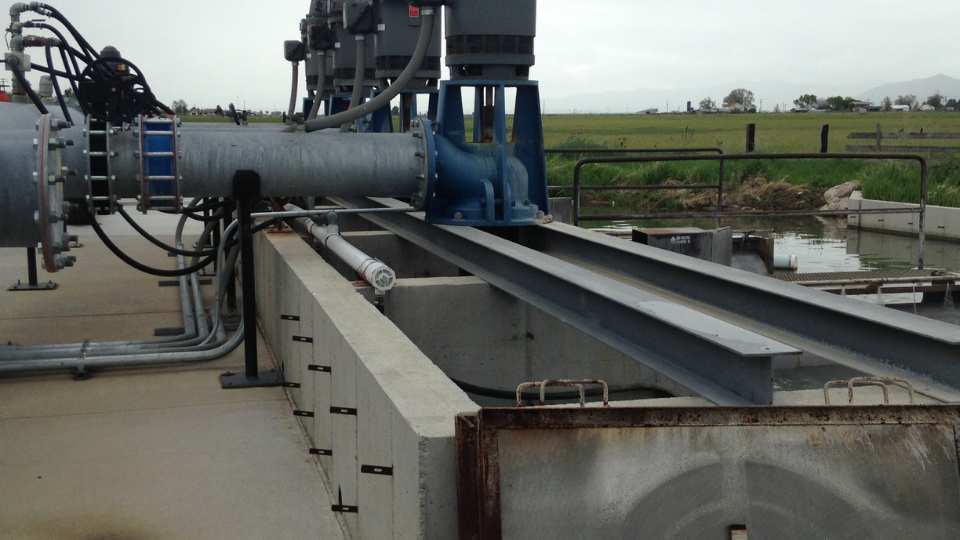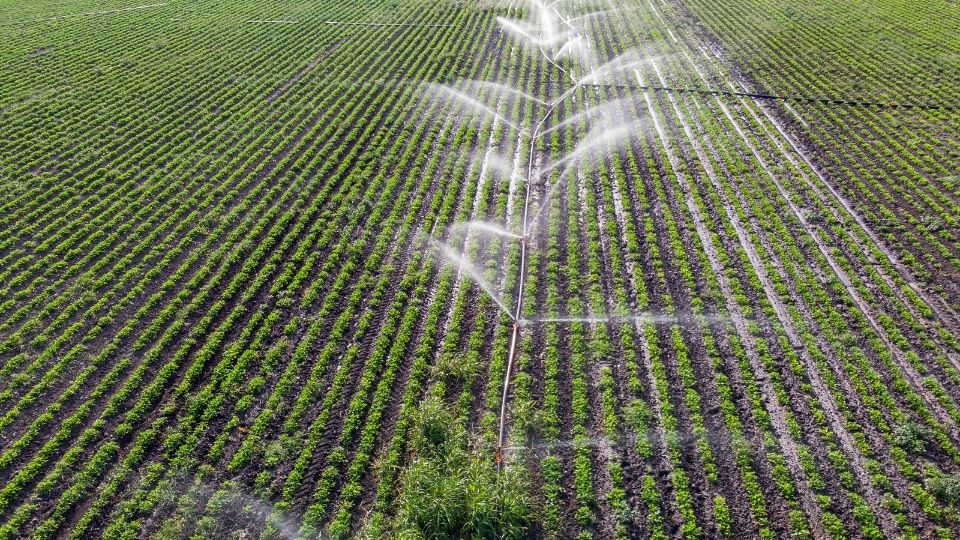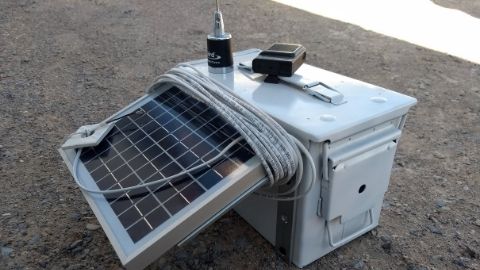Easy Calibration for Boom Sprayers
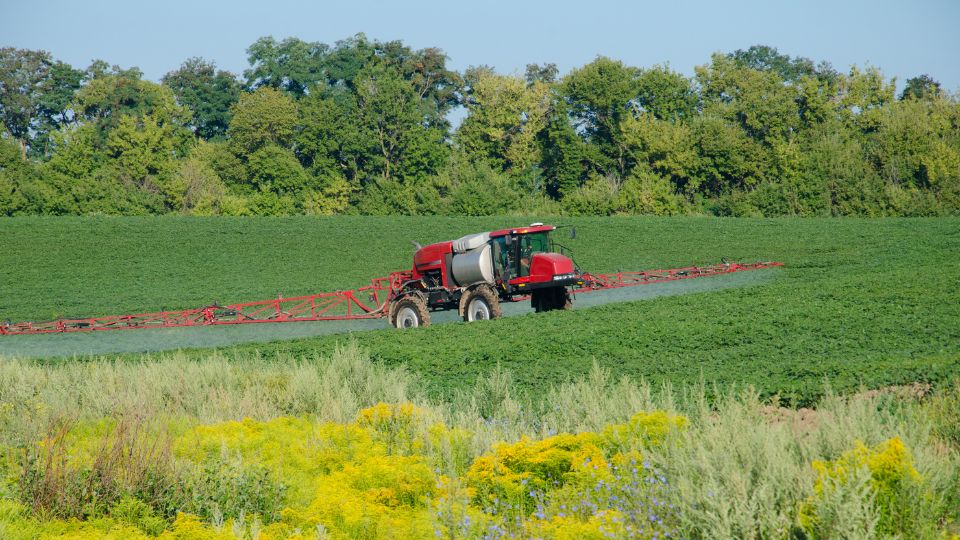
Introduction
Calibrating spray equipment is an important first step when applying pesticides, fertilizers, and other chemicals. If nozzles are not properly calibrated, it can result in over or under application of chemicals, causing crop damage, reduced pest control, and potential safety concerns. Making the effort to properly mix chemicals and calibrate sprayers can save money and headaches in the long run. This fact sheet provides simple guidelines for calibrating boom sprayers.
Sprayer Calibration Benefits
- Apply chemical uniformly and in accordance with label-recommended application rates.
- Maximize the efficacy and reduce variation of the chemical applications, resulting in better crop performance, yield, and profit.
- Avoid inaccurate and non-uniform applications, which can violate label restrictions, waste resources (time, fuel, chemical), and cause environmental harm.
Getting Started
Calibration is measuring how many gallons the sprayer applies per acre. Because there are 128 ounces (oz) in 1 gallon (gal), it is possible to calculate the gallons sprayed per acre by measuring the number of ounces applied to 340.3 ft2 (1/128 acre) (Ferrell, 1998; Figure 1). This method requires little math.
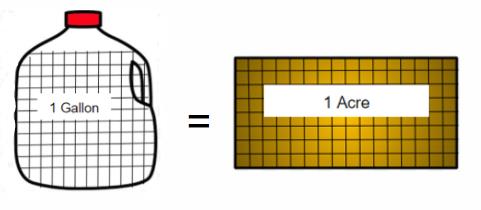
Equipment Inspection
- Clean, and inspect the equipment to ensure that it is free of pesticide residue and in working order.
- Check nozzles for functionality and uniform spray pattern.
- Measure the amount of water sprayed by each nozzle for 30 seconds using a catch cup or graduated measuring container. All nozzles should emit within 10% of the average of all the nozzles. If not, the nozzle may need to be cleaned or replaced. Note: Do not clean nozzles with your bare hands or mouth. Use appropriate tools or compressed air.
- Does the spray pattern appear even or as advertised by the manufacturer? If not, clean or replace the nozzle.
- Do any nozzles leak after the sprayer is turned off? If so, the manifold check valve may need to be replaced.
- Once equipment passes inspection, proceed to calibration.
Calibration Steps
Step 1
Count the number of nozzles on your boom sprayer and measure the distance between them (Figure 2a).
Number of nozzles: _________ Distance (in.): _________
Step 2
Use Table 1 to calculate the driving distance that equals 1/128 acre.
Table 1.
Calibration Distance for Each Nozzle to Spray 1/128 Acre*
| Nozzle/row spacing (in.) | Travel distance (ft) |
|---|---|
| 18 | 227 |
| 20 | 504 |
| 22 | 185 |
| 24 | 170 |
| 26 | 157 |
| 28 | 146 |
| 30 | 136 |
| 32 | 127 |
| 34 | 120 |
| 36 | 113 |
| 38 | 107 |
| 40 | 102 |
* Table modified from Ozkan, 2016.
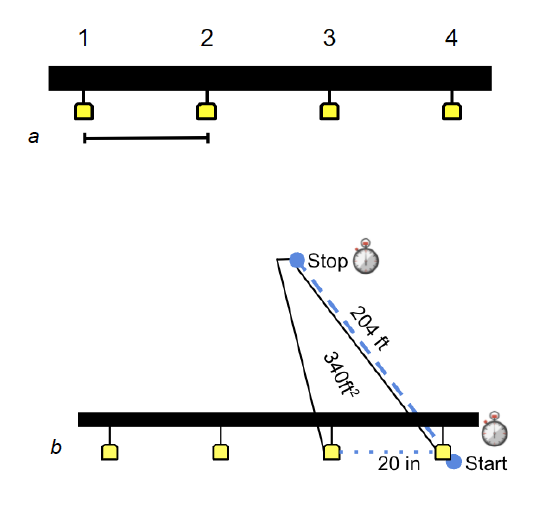
Step 3
Time yourself driving the distance indicated in Table 1. It is important to be as consistent as possible with the speed of the vehicle (gear, range, RPMs). You can repeat this step and average your driving time to increase your accuracy. An example is included in Figure 2b. Write down the average driving time in seconds.
Average driving time (seconds): _________
Step 4
Fill your sprayer with water (pesticide residue should have been removed beforehand) and use a fluid ounce measuring container to catch water from each nozzle for the time you wrote down in step 3. Write down the number of ounces collected for each nozzle and then calculate the average (add the ounces for each nozzle and divide the answer by the number of nozzles).
Average oz/nozzle: _________
Congratulations! The average ounces per nozzle equals the number of gallons per acre. For example, 15 oz per nozzle = 15 gal gallons per acre.
Write down your gal per acre here: _________
Date: _________
Photo Credit
Authors provided all photos.
References
- Ferrell, M. A. (1998). 1/128 method of calibration: Calibrating hand sprayers and high pressure hand guns [Fact sheet MP-93.3]. University of Wyoming Extension. https://uwyoextension.org
- Ozkan, H. E. (2016, April 4). Boom sprayer calibration [Fact sheet FABE-520]. Ohioline, Ohio State University Extension. Retrieved November 12, 2019, from https://ohioline.osu.edu/factsheet/fabe-520.
Published November 2022
Utah State University Extension
Peer-reviewed fact sheet
Authors
Cody Zesiger, Kalen Taylor, Corey Ransom, Earl Creech, and Matt Yost
Related Research






